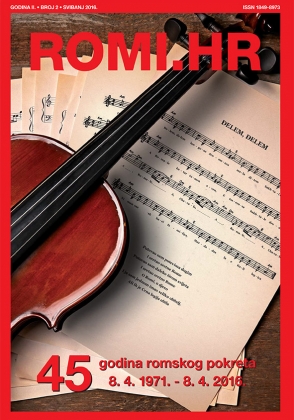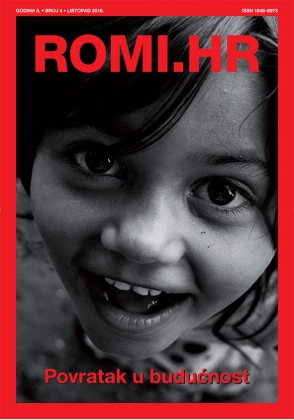Fokus ROMI.HR
/
Nastavljamo seriju članaka u kojima predstavljamo sve četiri priznate nacionale manjine u Njemačkoj.
Granicu između njemačke pokrajine Schleswig-Holstein i Danske je teško uočiti, mnogi ljudi koji žive tamo govore i njemački i danski jezik. U najsjevernijoj njemačkoj pokrajini živi oko 50.000 osoba koje pripadaju danskoj nacionalnoj manjini, a koje su njemački državljani. Oni su dobro organizirani i pomažu u stvaranju mostova i povezivanju sa susjednom Danskom. Danska nacionalna manjina u Njemačkoj je jedna od četiri nacionalne manjine koje priznaje Savezna Republika Njemačka.
Danska nacionalna manjina u južnom Schleswigu, u Njemačkoj, postoji pod tim imenom još od 1920. godine, kada je Skupština Schleswiga podijelila Schleswig, kojim je upravljala Njemačke na dva dijela: Sjeverni Schleswig, s danskom većinom i njemačkom manjinom ujedinjenom s Danskom, dok je južni Schleswig ostao dio Njemačke i imao je njemačku većinu i dansku i frizijsku manjinu. Oni žive u pograničnom gradu Flensburgu, u četvrtima Schleswig-Flensburg i Nordfriesland te u sjevernom dijelu okruga Rendsburg-Eckernförde. Danska manjina naziva područje koje naseljava Južni Schleswig. S druge strane granice postoji i njemačka manjina u Kraljevini Danskoj. Flensburg je kao takav odigrao veliku ulogu u povijesti i njemačkog i danskog naroda. To je zbog njegovog položaja. Budući da je treći po veličini grad u Schleswig-Holsteinu, najsjevernijoj pokrajini Savezne Republike Njemačke, Flensburg se nalazi najsjevernije na granici prema Danskoj. S obzirom na to, logično je da grad ima mnogo zajedničke danske i njemačke povijesti.
Flensburg su u XIII. stoljeću osnovali danski doseljenici, kojima su se uskoro pridružili njemački trgovci, na najdubljem kraju Flensburške brane. Godine 1284. potvrđen je njegov status grada i grad se brzo uzdigao i postao jedan od najvažnijih u vojvodstvu Schleswig. Schleswig nije pripadao njemačkom Svetom Rimskom Carstvu. Stoga Flensburg nije bio član Hanzeatske lige, ali je održavao kontakte s ovom važnom trgovačkom mrežom.
Nakon pada Hanzeatske lige u 16. stoljeću, Flensburg je bio jedan od najvažnijih trgovačkih gradova sa skandinavskim područjem. Trgovci iz Flensburga trgovali su čak i s dalekim Mediteranom, Grenlandom i Karibima. Kako su europske sjeverne regije bile bogate morskim životom, ljudi su se u velikoj mjeri usredotočili na ribolov i lov na kitove radi svog opstanka, kao i zbog trgovinu. Stoga su najvažnije robe kojima se trgovalo bile kitovo ulje i haringa.
Tridesetogodišnji rat okončao je ovo razdoblje trgovačkog procvata. Grad je postao protestantski i time potpao kulturno i jezično, sve više pod utjecaj Nijemaca, dok su susjedna sela ostala izrazito katolička i stoga danska.
Povijest Flensburga kao dijela Danske okončana je 1864. godine. Kao posljedica Drugog rata u Schleswigu, grad je pao pod vlast Kraljevine Pruske. Drugi rat u Schleswigu bio je drugi vojni sukob oko regije Schleswig-Holstein u devetnaestom stoljeću. Ovaj sukob nastao je zbog pripajanja vojvodstva Schleswig danskom kraljevstvu, kao i zbog etničkih kontroverzi u Schleswigu i postojanja sukoba između danske unitarne države i njemačke konfederacije.
U godinama nakon Drugog svjetskog rata, u Južnom Schleswigu, a posebno u Flensburgu postojao je snažan pro-danski pokret. Cilj pokreta je bio ujedinjenje Flensburga i većine Schleswiga s Danskom. U godinama nakon 1945. u gradskom vijeću u Flensburgu su dominirale danske stranke, a grad je imao danskog gradonačelnika. Stoga, kako bi se spriječilo ponavljanje porasta etničkih napetosti između Nijemaca i Danaca, bilo je potrebno pronaći rješenje. Ovo rješenje stvoreno je u obliku Bonn-Kopenhagenske deklaracije usvojene 1. travnja 1955. godine. Ovaj sporazum međusobno obvezuje Saveznu Republiku Njemačku, kao i Kraljevinu Dansku, da poštuju i štite prava i jedne i druge manjine na svom državnom teritoriju.
Danas, zahvaljujući velikom broju jakih i neovisnih organizacija, danska manjina može živjeti u skladu sa svojim vrijednostima i tradicijom. Sydslesvigsk Forening, skraćeno SSF - South Schleswig Association - je njihova glavna kulturna organizacija. Sa svojom strankom, Südschleswigscher Wählerverband, Udruženjem glasača Južnog Schleswiga, danska manjina je također zastupljena u parlamentu Schleswig-Holstein u regionalnoj vladi u Kielu.

The Danes in Germany
The border between Schleswig-Holstein in Germany and Denmark can hardly be noticed: many people speak both German and Danish. In the northernmost German region there are approximately 50,000 persons who belong to the Danish minority, and who are German citizens. They are well organized and help to create bridges to neighboring Denmark. Danish minority in Germany is one of four National Minority recognized by Federal Republic of Rermany.
The Danish ethnic minority in Southern Schleswig, Germany, has existed by this name since 1920, when the Schleswig Plebiscite split German-ruled Schleswig into two parts: Northern Schleswig, with a Danish majority and a German minority was united with Denmark, while Southern Schleswig remained a part of Germany and had a German majority and Danish and Frisian minority populations.
They live e.g. in the border city of Flensburg, the districts of Schleswig-Flensburg and Nordfriesland and also in the northern part of the district of Rendsburg-Eckernförde. The Danish minority calls its area of settlement South Schleswig. On the other side of the border there is also a German minority in the Kingdom of Denmark.
Flensburg as a such thereby played a huge role in the history of German and Danish people. This is due to its location. As it is generally speaking the 3rd largest city in Schleswig-Holstein, which is already the northernmost Federal Republic of Germany, Flensburg lies furthest to the north and on the border towards Denmark. Form this point of view alone, it’s logic that the City has a lot of mutual history for both Danes and Germans.
Flensburg was founded in XIII century at the innermost end of the Flensburg Firth by Danish settlers, who were soon joined by German merchants. In 1284, its town rights were confirmed and the town quickly rose to become one of the most important in the Duchy of Schleswig. Schleswig did not belong to the German Holy Roman Empire. Therefore, Flensburg was not a member of the Hanseatic League, but it did maintain contacts with this important trading network.
After the fall of the Hanseatic League in the 16th century, Flensburg was said to be one of the most important trading towns with the Scandinavian area. Flensburg merchants were trading as far away as the Mediterranean, Greenland and the Caribbean. As Europe’s northern regions were rich of sea life, people heavily focused on fishing and whale hunting for their survival as well as for trade. The most important commodities therefore were, whale oil and herring.
The Thirty Years' War put an end to this boom time. The town was becoming Protestant and thereby became culturally and linguistically, ever more influenced by Germans while the neighboring countryside remained decidedly Catholic and therefore Danish.
Flensburg’s history as part of Denmark ended in 1864. As a result of the Second Schleswig War, the City was passed on to the Kingdom of Prussia. The Second Schleswig War was the second military conflict over the region of Schleswig-Holstein in the nineteenth century. This conflict arose due to the integration of the Duchy of Schleswig into the Danish Kingdom as well as due to ethnic controversy in Schleswig and the co-existence of a conflict between the Danish unitary state and the German Confederation.
In the years after the Second World War, there was in South Schleswig, and particularly in Flensburg a strong pro-Danish movement. The goal was for the town, and most of Schleswig to be united with Denmark. In the years following 1945, Flensburg's town council was dominated by Danish parties, and the town had a Danish mayor. Therefore, to prevent another up rise of ethnic tensions between Germans and Danish, a solution needed to be set in place. This solution came in the form of the Bonn-Copenhagen Declaration on April 1st 1955. This agreement mutually binds the Federal Republic of German, as well as the Kingdom of Denmark to respect and to protect the rights of each other’s minority in the respective state territory.
Today, due to many strong and independent organizations, the Danish minority is able to live its values and traditions. Sydslesvigsk Forening mainly abbreviated with SSF – the South Schleswig Association – is their main cultural organization. With their own party, the Südschleswigscher Wählerverband, the South Schleswig voters' association, the Danish minority is also represented in the Schleswig-Holstein parliament and in the regional government in Kiel.
 Povratak na Fokus
Povratak na Fokus












